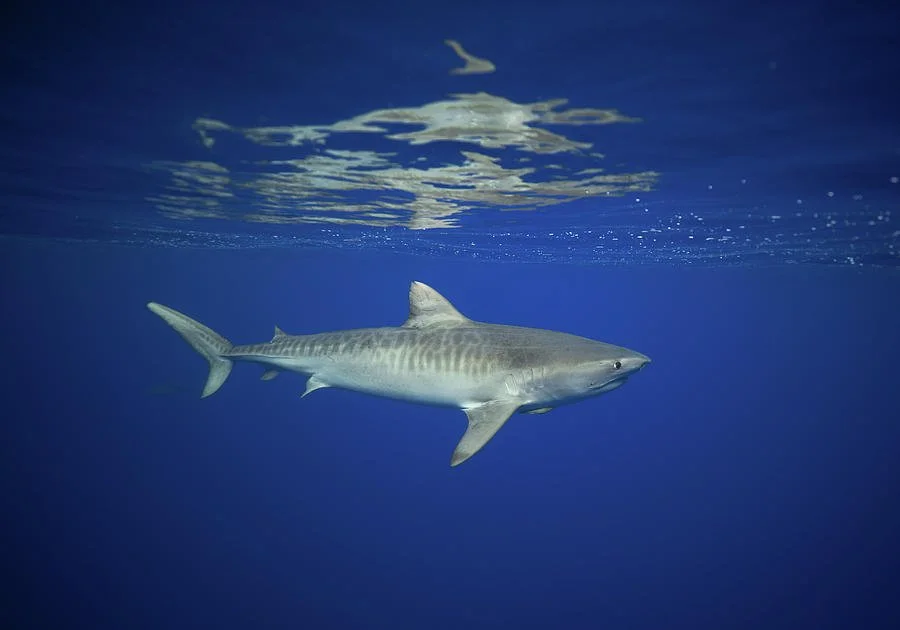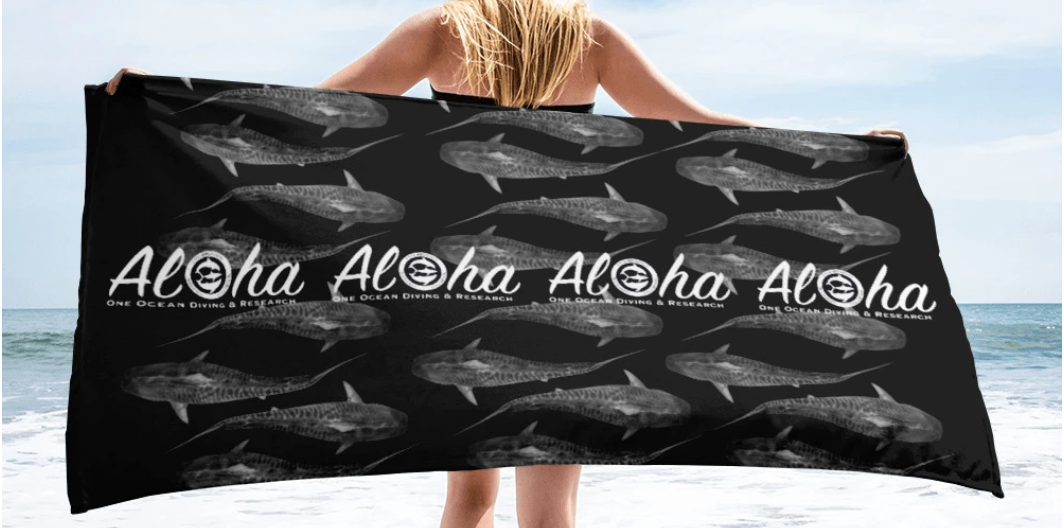Sharks have developed their senses over millions of years to become the apex predators that they are today.
Their vision is actually about the same as humans! However, they see in monochromatic vision, which means they see colors on a greyscale. Any colors that are high in contrast such as yellow, orange, and white stick out to them.
This is the reason that we dive with dark colored gear (grey, black, blue, red, green). For example, if you wear an all black wetsuit and a white glove, a shark would see that as two separate entities and be more likely to come in close to check out the glove hand. By wearing dark colored gear, we’re lessening the likelihood that a shark would feel the need to get close to check something out.
If you wear a bright color on your body, the shark can still tell that you are a larger organism, and would be less likely to approach. We try to eliminate bright colors on extremities, but on the body, different colors are not as important.
GoPro poles are another item we often have to swap out for guests before dives. Many people have the bright “yum yum yellow” GoPro pole, so we swap it out with a black one. Since the shark can detect the GoPro using its ampullae of Lorenzini and can see the bright pole, it would be likely to come in and take a closer look.
The Ampullae of Lorenzini are jelly filled pores on the top of the sharks head. These pores detect electrical impulses such as heartbeats, boat engines, muscle contractions, and electronic devices, such as the GoPro mentioned above. For this reason, we ask guests to take off smart watches before they enter the water. This is why we ask for GoPros to be on poles.
Sharks also have a great sense of smell. Many people think sharks are attracted to the smell of humans and human blood, but that’s not true! Sharks don’t associate the smell of humans or our blood with food, so you can swim while bleeding without having to worry!
Sharks also have great hearing. They can hear boats coming from a mile away and birds splashing on the surface from 300 yards away! This is why it’s so important to keep splashing to a minimum when you are swimming in the ocean. Splashing mimics injured prey which could attract a curious shark.
If you want to learn more about sharks’ senses, check out Ocean Ramsey’s book, What You Should Know About Sharks.




